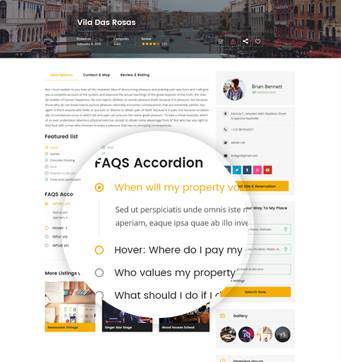
At some point, tough conversations need to lead to real change. For many facing substance abuse, mental health challenges, or physical setbacks, inpatient rehab isn’t just a treatment option—it’s a lifeline.
This structured, immersive care model offers a chance to heal in a safe environment, away from everyday triggers. Whether you’re exploring it for yourself or a loved one, this guide will walk you through what inpatient rehab truly means, how it works, and why it’s often the most powerful step toward lasting recovery.
What Is Inpatient Rehab?
Inpatient rehab—also known as residential treatment—is a live-in, full-time care program designed to help individuals overcome addiction, manage mental health conditions, or recover from physical trauma. Unlike outpatient services, it provides round-the-clock support in a controlled and therapeutic environment.
This holistic setup includes medical supervision, counseling, physical therapy (if needed), and structured daily activities—all tailored to the individual’s recovery path.
When Does Inpatient Rehab Become Necessary?
If you’re constantly relapsing, unable to function daily, or living in a toxic environment that hinders progress, inpatient rehab becomes not just a choice but a necessity. It offers the stability and support that are often impossible to find elsewhere.
You might need it if:
- Outpatient care hasn’t worked
- You have a co-occurring mental health disorder
- You’re facing severe withdrawal symptoms
- Your living environment is a barrier to recovery
Inside the Rehab Walls: How Inpatient Rehab Works
Every journey begins with a structured admission process. Here’s what the general path looks like:
1. Assessment & Admission
A team of professionals evaluates physical, psychological, and emotional health to develop a personalized treatment plan.
2. Medical Detox (if needed)
Detox is closely monitored by medical staff to say fely manage withdrawal symptoms.
3. Therapy & Counseling
From individual psychotherapy to group therapy and CBT (Cognitive Behavioral Therapy), each session is designed to treat the root cause—not just the symptoms.
4. Medical Monitoring
Daily check-ins, medication (if required), and ongoing evaluation ensure steady progress.
5. Aftercare & Exit Planning
The journey doesn’t end when you walk out the door. Aftercare plans include continued therapy, outpatient follow-ups, and peer support to maintain progress.
Types of Inpatient Rehab Programs

Recovery isn’t one-size-fits-all. Here are the key types of inpatient rehab programs:
Inpatient Drug Rehab
Tailored for those struggling with drug dependency, including detox, behavioral therapy, and relapse prevention strategies.
Inpatient Alcohol Rehab
Combines medical detox, counseling, and group therapy such as AA (Alcoholics Anonymous).
Inpatient Physical Therapy Rehab
Designed for those recovering from injury or surgery, focusing on regaining mobility through physiotherapy and strength training.
Each residential treatment program adapts to the patient’s specific condition and recovery pace.
What to Expect in a Day at Inpatient Rehab
A typical day includes:
- Morning routines: Mindfulness, breakfast, and medical check-ins
- Therapy sessions: Individual and group-based
- Physical activities: Yoga, walks, or structured exercise
- Life skills workshops: Nutrition, stress management, and relapse prevention
- Community building: Peer interactions, shared meals, support groups
This structure supports not just recovery, but the foundation for a better life.
Does Inpatient Rehab Really Work?
Short answer—yes. Studies consistently show that inpatient rehab programs have higher success rates than outpatient care for long-term addiction recovery. Why?
Because they eliminate distractions and provide 24/7 accountability, medical oversight, and therapeutic support. However, the effectiveness also depends on the individual’s commitment and a strong aftercare plan.
How Long Does Inpatient Rehab Last?

Program length depends on individual needs:
- 30-Day Rehab: Ideal for mild cases and those with strong post-rehab support
- 60-Day Rehab: Offers more time for deep healing and therapy
- 90+ Days or Long-Term Rehab: Suitable for severe addiction, dual diagnoses, or chronic mental health disorders
Recovery isn’t linear. The right duration helps ensure lasting healing.
What’s the Cost of Inpatient Rehab?
Costs vary widely based on the location, facility amenities, and length of stay. Luxury rehabs offer upscale facilities, while more affordable centers still provide effective care.
Most insurance providers cover some or all expenses. If not, ask about payment plans or financial aid options many centers offer.
Choosing the Right Inpatient Rehab Facility
Not all facilities are created equal. When evaluating options, consider:
- Licensing & Accreditation
- Staff Qualifications
- Treatment Methods (CBT, holistic, faith-based, etc.)
- Success Stories & Reviews
A personal visit or virtual tour can give a clearer picture of the care and atmosphere you or your loved one will experience.
Life After Rehab: The Road Ahead

Finishing inpatient rehab isn’t the end—it’s the beginning.
Transitioning back to daily life means engaging in aftercare:
- Outpatient counseling
- Peer support groups
- Sober living homes
- Continued medical follow-ups
The support doesn’t end at discharge—it evolves with you.
Inpatient rehab provides a transformative opportunity to reset, rebuild, and reclaim control over your life. From medical detox to emotional healing, residential treatment programs offer the intensive, compassionate care needed for true addiction recovery.
If you or someone you love is on the edge of that conversation—know that talk can turn into treatment. And treatment can lead to transformation.





